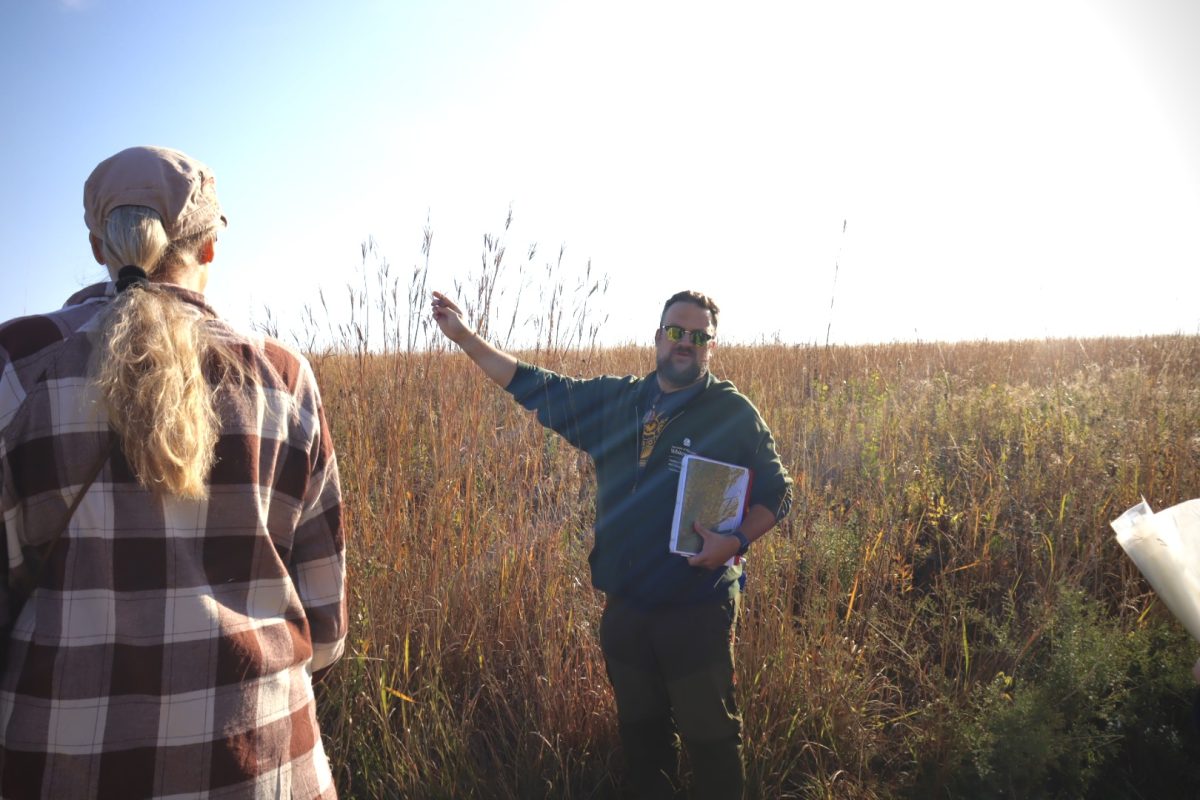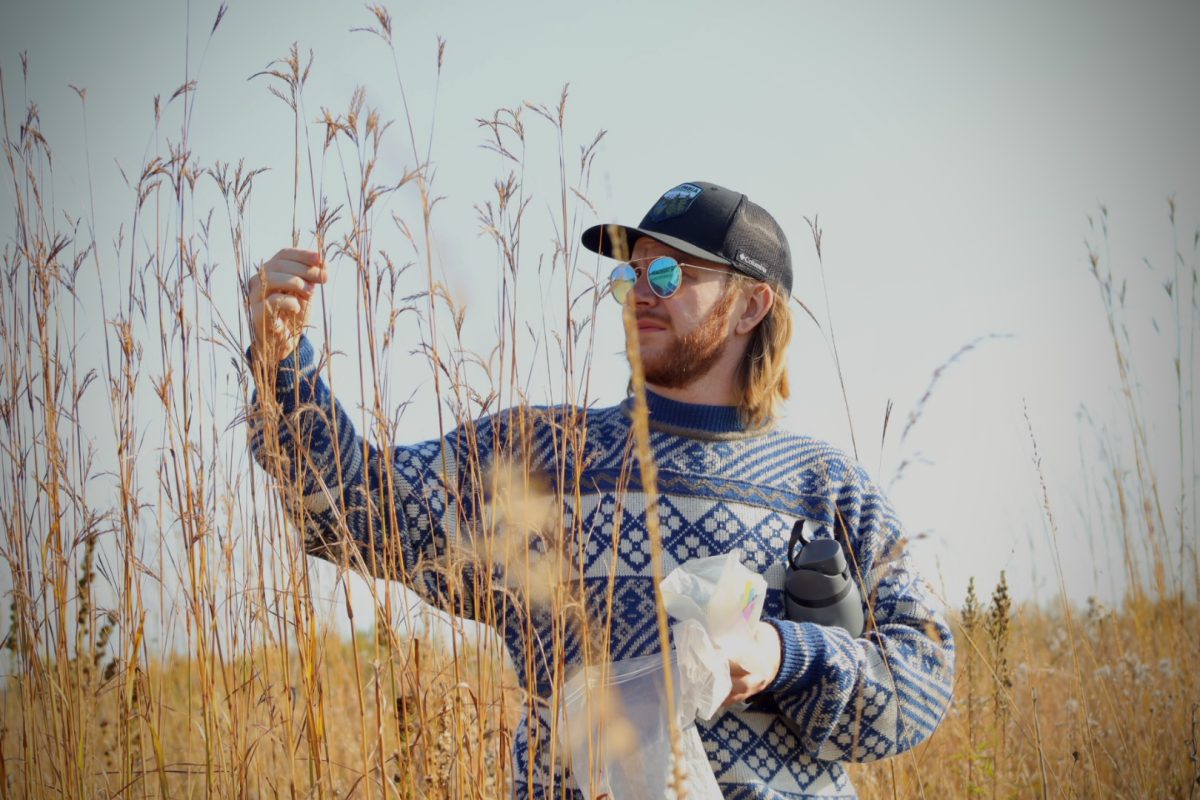Located on the northeastern border of campus near Wells Residence Hall is UW-Whitewater’s very own nature preserve. Home to 100 acres of land total, 40 acres make up Fryers Woods and the other 60 acres are a mix of prairie lands behind Perkins Stadium.
“This is a beautiful place to enjoy fall and get the fall vibe,” exclaimed Sustainability Director Wesley Enterline. “Get yourself the pumpkin spice and vibe on.”
Enterline manages the preserve alongside the Facilities, Planning and Management grounds crew. The preserve offers campus and community members a beautiful walking trail and many volunteering options. However, the preserve is more than what meets the eye.
“This ecosystem is unique in that it stores a lot of carbon, what you see above the ground is about 35% of the story, the rest of it is all below ground,” Enterline stated, “and the root mass is what is responsible for the healthy soil we have and the reason why agriculture has been so successful in our area of Wisconsin and Illinois.”
The preserve itself is 30 years old but holds quite a historic upbringing nonetheless. The land the preserve now consumes was not always an ecosystem like it is today.
The history begins when Europeans settled here and Nelson Fryer owned a farm that roughly took up the entirety of the Jefferson County side of campus. Fryer began as a farmer but became a Wisconsin State Assembly member later on. Soon after, UWW bought the land to build married student housing but it fell through because they didn’t have the projected enrollment.
Following in 1979 there was a proposal to build a prison but that same year the board of regents approved a project under land and water conservation fund grant, known on campus as LAWCON, which opened up recreational development in the whole north end of campus. Investments were then made to make the land into a preserve under technically a ‘park’ label. Meaning they could build recreational facilities and that is it. These facilities consist of the now picnic shelters near the preserve and the tennis courts by Esker Dining Hall that were funded partly by these federal grants. All in all the preserve and those facilities are protected from any development that is not recreational. This led to the birth and protection of UW-W and now a nature preserve.
The preserve serves as a great learning tool for students on campus. This past Saturday, Oct. 12 the preserve hosted a seed collecting event. The participants collected prairie seeds from various native plants that are in the reconstructed part of the prairie. The seeds collected will be replanted in other areas of the nature preserve. With the goal ultimately being to add more diversity to the preserve.
“More plant diversity is kind of where the seeds are in the play, but that should lead to insect diversity and bird diversity and other forms of it to improve the overall ecosystem out here,” Enterline said.
Students like Natalie Shortreed, a UW-W senior and environmental science major with a geoscience emphasis, spend lots of their freetime reconstructing and managing the preserve.
“Out here is where I want to spend the rest of my life and I like actually seeing a place be restored and actually seeing a patch that can breathe and grow again,” Shortreed said.
Shortreed and others recently have spent this past summer working on the preserve to remove sweet clover and parship. Looking forward they plan to remove buckthorn and honeysuckle before winter hits and once spring arrives, they plan to remove more herbaceous plants like garlic mustard, sweet clover, wild parsnip, and common tansy.
“The nature preserve brings me a lot of peace,” Shortreed said, “I really like seeing that we are actually putting the step forward to restore of places because we have taken so much land to make the dorms and campuses and I personally feel like grass is boring so to be able to step away and walk somewhere with plants you may have never seen before, it is really fun.”
The Sustainability Office offers several volunteer opportunities that are meant to provide hands-on experience. The UW-W Prairie and Nature Preserve offers history and habitat for fall hikers and visitors all year round, no matter the season.
“Come and check it out,” Enterline said, “If you haven’t been out before, just walk down the path and experience what the preserve has to offer.”



